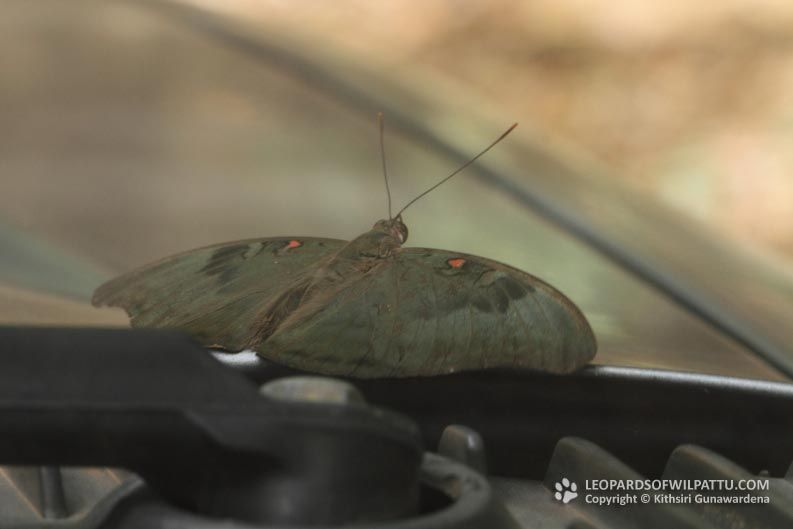
Butterflies ‹‹ Go Back
This species is found throughout the oriental region. It belongs to a family called brush-footed butterflies. The front legs of these butterflies are shorter than the other four legs. Thus the insect cannot use them to walk or stand. These reduced legs are devoid of feet and have brushes of hairs. The butterfly uses them to smell and taste. The conservation status of this species is regarded as Least Concerned (National Red List 2012) and it is protected under the Fauna and Flora Protection Ordinance as amended by Act No. 22 of 2009.
This is a forest loving species that can be seen in both the dry zone and wet zone forests of the low country. Even though this is a shy species that is quite hard to approach for photography their behavior changes dramatically during the fruiting season of certain trees where these butterflies will gather in numbers to feed on the rotting fruits on the ground. In May 2005 in Ritigala I observed many of them feeding on some rotting fruit on the road. They were extremely bold and tolerant of people as well as vehicles. Many of them continued to feed until they are run over by the passing vehicles. It appeared that the fruits had an intoxicating effect on these insects. I have observed a similar behavior in Wilpattu with these butterflies during the fruiting season of the Pulima trees.
The caterpillar of this butterfly is known to feed on the leaves of Ebony trees (Kaluwara) Diospyros ebenum, which is commonly found in Wilpattu.
I have seen this species at Sinharaja, Knukles and Morapitiya Forest Reserves in the wet zone and at Ritigala in the dry zone. The Highest elevation at which I have recorded this species have been at Meemure in the Knuckles Forest Reserve at an altitude of 1310 meters.
In Wilpattu this butterfly can be seen from May until August feeding on minerals as well as the rotting fruit on roads that run through tall forests. During this period it can be commonly seen between Nelum Wila and Panikkar Villu junction and the road between Panikkar Villu bungalow and Aalam Villu. I have also seen this butterfly on a number of occasions on the Kumbuk Wila Upper Road and on the road between Kudapatessa and Kokkare villu.



